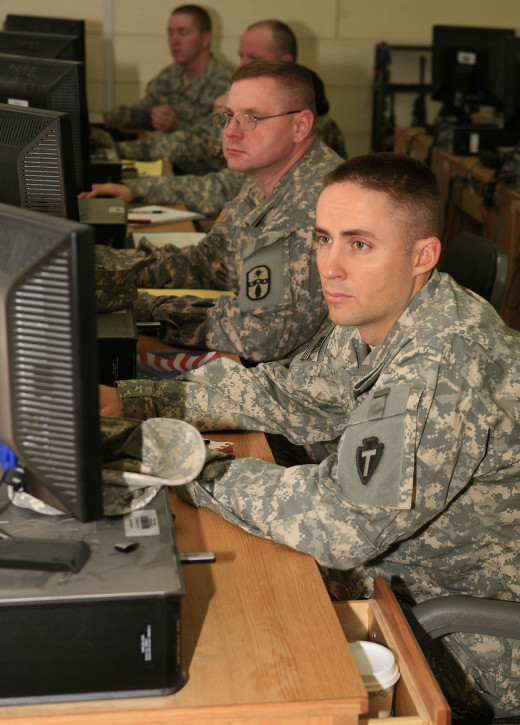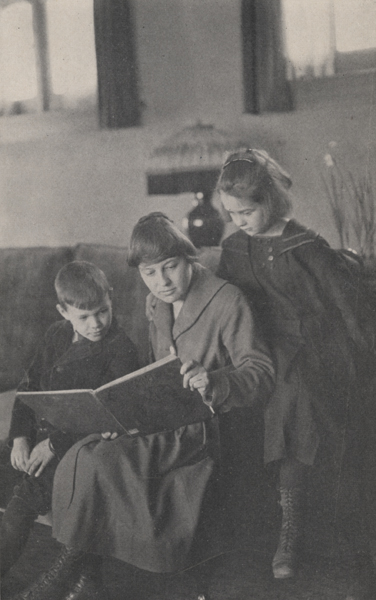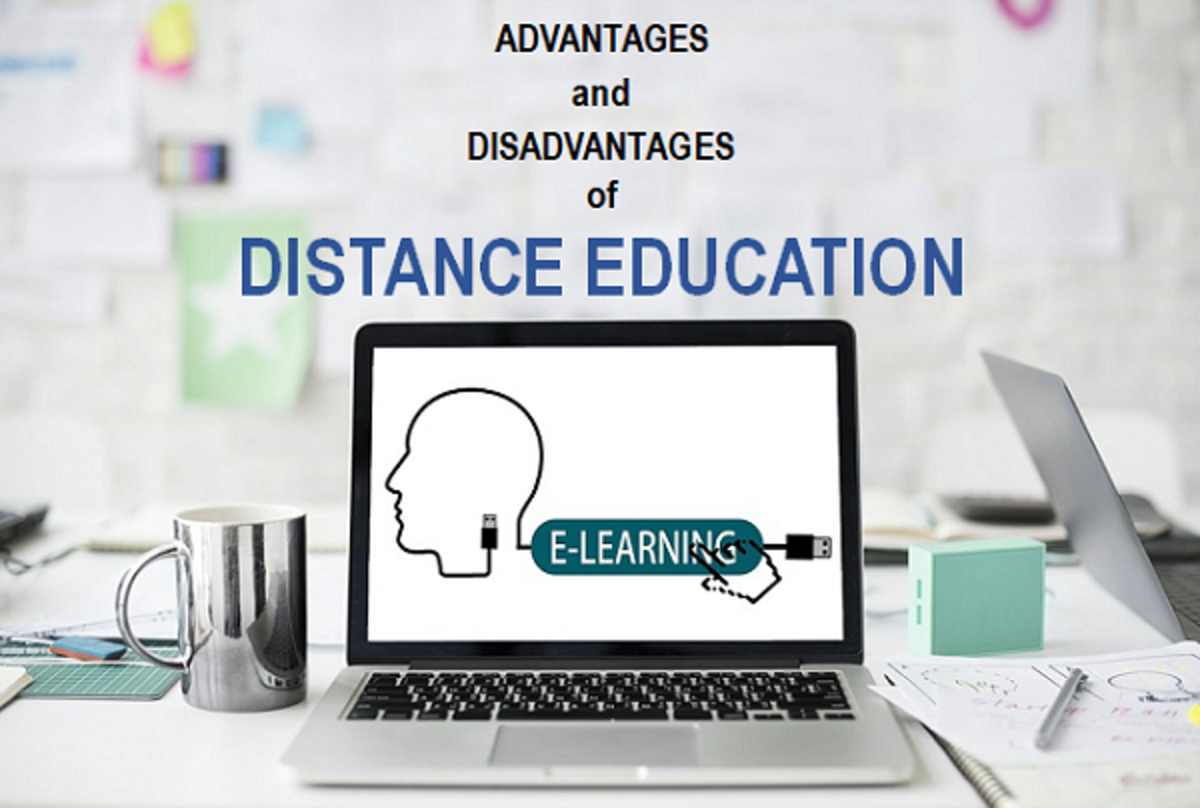Comparing Correspondence Education and Distance Education
Distance Education Means Online Education

Comparing Correspondence Education and Distance Education
Sometimes correspondence education is called Correspondence Courses, Extension Courses, Extended Studies, Home Study, Continuing Education, External Studies, Self-Paced Studies, Independent Studies and Distance Learning (See Reference 1). Similarly, distance education is also called Cyber Education, Online Education, Virtual Education, Technology-Supported Education, Hybrid Education and Distributed Learning. Given the plethora of educational delivery modes currently available, students often get confused over the similarities and differences between correspondence education and distance education, further compounded by the fact that there are still other online delivery modes, such as synchronous live chats or hybrid online classes, among others.
What Is Correspondence Education?
Correspondence education, in fact, is part of distance education: a non-traditional instructional model in which all the course materials are sent to the learner via mail or electronic means so that she can master the materials on her own at her own pace—in the absence of an instructor. (See Reference 2). Once the student has studied the course materials, she will, via mail or electronic means, send back her work for feedback, analysis, criticism, and grading, thus completing the course. On the other hand, distance education nowadays largely means online education with various instructional delivery models, synchronous (instantaneous live chats) or asynchronous (recorded or archived live chats), using internet, TV, or other electronic means such as video or audio tapes. Both models came into being to implement, overcome, or improve the instructional limitations often found in the existing brick-and-mortar instructional model.
Correspondence Education

Correspondence Education and Its Historical Background
According to the University of Florida website, “Correspondence education, the earliest version of distance education,” was “developed in the mid-nineteenth century in Europe (Great Britain, France, Germany), and the United States, and spread swiftly” (See Reference 3). For example, as early as 1840, “an English educator, Sir Isaac Pitman, taught shorthand by mail.” In America, correspondence education began “in 1873 by Anna Ticknow,” who “established a society that presented educational opportunities to women of all classes to study at home.” Initially correspondence education incorporated many then innovative technologies, such as “lantern slide and motion pictures,” but radio broadcasting became a main delivery method after 1910, which will eventually metamorphose into TV delivery later (See Reference 3). Originally intended to educate “trade” instruction, the correspondence course started to offer courses in liberal arts for those who cannot, due to geographical distance and isolation, participate any on-ground instruction in brick-and-motor institutions.
Distance Education

Differences in the Delivery Methods
Correspondence education is much slower in pace than today’s distance education as it employs yesterday’s technology, such as mail or even radio; as a result, it relies heavily on the self-paced learning progress of the student, in the absence of a teacher, as it does not include any face to face interaction with the instructor at all, much less any interaction with other classmates; due to its intrinsic delivery method, the communication flow in a correspondence education is typically top-down, instructor-centered, and not student-centered, one way communication. In fact, it was first developed to overcome the challenges of access to university education, especially for women and servicemen via improved modern mail delivery system (See Reference 3). Unlike correspondence education, however, today’s distance education takes advantage of ever-improving, fast internet technology as well as ever-evolving instructional delivery methods; typically, the instruction is delivered instantaneously via live chat in the virtual classroom. Depending on the model of delivery, some schools may incorporate emails and live chats as well as audio or video recordings.

Differences in Academic Rigor
Today’s online education offers far more student-centered, interactive learning environment than the traditional correspondence model once did; in fact, the instructor and the learner can share a virtual class, interacting instantly during the live chat. Typically, today’s instructional platform will include a built-in instant message pod, in which students can type their questions for the teacher to see and respond, instantly. As a result of such virtual interaction, the teacher can offer individualized learning process tailored to the specific needs of individual students. To maximize such personalized learning, many online schools now use adaptive technology—a self-paced software program designed to assist various remedial needs of each student.
Furthermore, today’s distance education offers numerous opportunities for students to interact among themselves or with teachers, such as virtual communities, forums, discussion boards, webinars, teleconference, and other venues. Such peer-to-peer interaction, a dynamic part of learning, was impossible in earlier correspondence education. Similarly, today’s distance education resembles any brick-and-mortar education in that it offers just about all the infrastructures of a traditional school; for example, in place of a physical library, it offers cybrary or ebrary. In this regard, correspondence education was stagnant while online education is lively.

Convenience and Flexibility Factors
Both correspondence education and distance education allow students to be autonomous learners as they do not to adhere to the fixed schedules of an on-ground model; in fact, you do not have to drive to school or fight for a parking space. Since correspondence education leaves the learner alone, it offers more flexibility than distance education does. Some students might not like such “open flexibility” as it demands self-motivation, self-discipline, excellent time-management skills, and study habits. To a lesser extent, online education also offers autonomy since most of the live chats are usually archived so that students can check the recordings later at their convenience; if you work two to three different jobs, such accommodation will be good. Despite such flexibility, however, students must meet deadlines for posting their assignments and responses on the discussion board regularly. Depending on schools, you may have one or two such deadlines a week, thus reducing the autonomy.
1. Duke University: History of Distance Education (p.1)
http://mysite.du.edu/~kkeairns/de/Text/Lessons/Lesson1.pdf
2. Southern Association of Colleges and Schools: Distance and Correspondence (p.1)
http://www.sacscoc.org/pdf/Distance%20and%20correspondence%20policy%20final.pdf
3. University of Florida: History of Distance Education
http://iml.jou.ufl.edu/projects/spring01/declair/history.html








